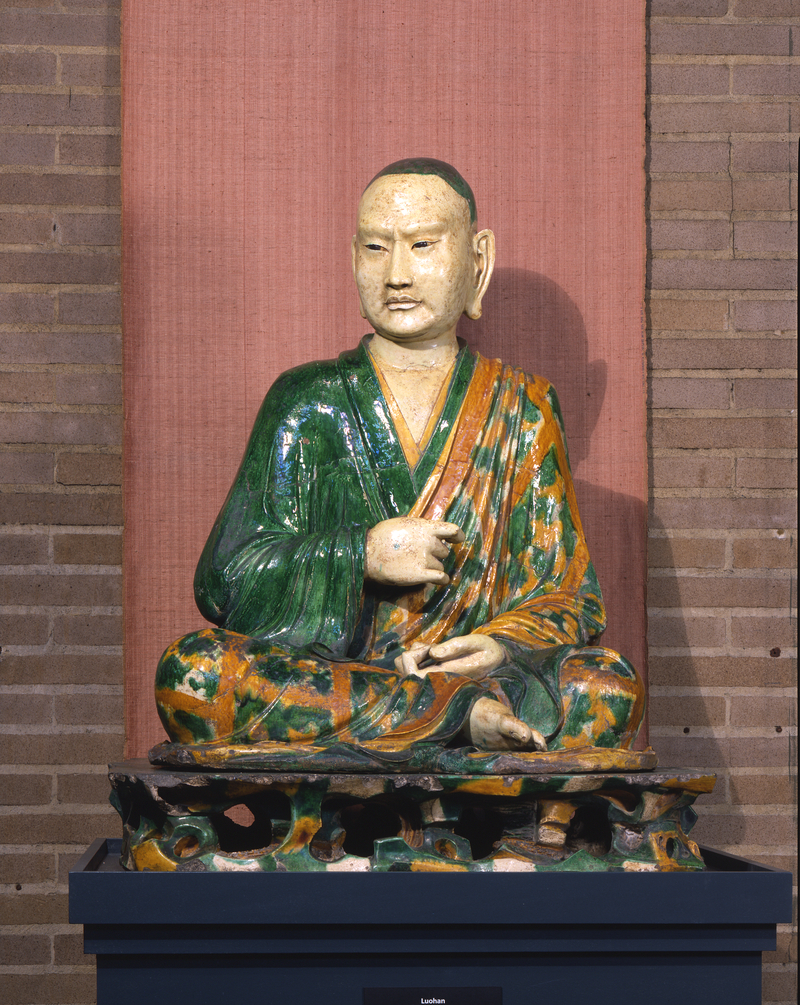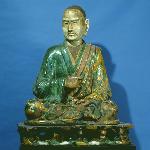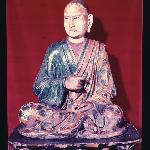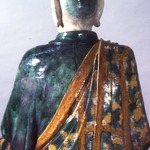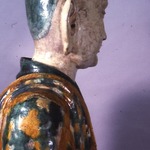Statue
C66A
Location: On Display in the Asia Galleries
From: China | Hebei | Yixian
Curatorial Section: Asian
| Object Number | C66A |
| Current Location | Asia Galleries - On Display |
| Culture | Chinese | Buddhist |
| Provenience | China | Hebei | Yixian |
| Period | Liao Dynasty (uncertain) | Jin Dynasty (uncertain) |
| Date Made | 10th century - 13th century CE |
| Section | Asian |
| Materials | Clay | Glaze |
| Technique | Fired | Glazed | Three Color Glaze |
| Iconography | Luohan |
| Description | Pottery figure of luohan found in cave near Yizhou, present day Yixian county in Hebei province. It is made of soft white pottery with a polychrome glaze and somewhat larger than life size. The Luohan is seated cross-legged in the conventional attitude of meditation. Luohans, also known as arhats, are accomplished Buddhist disciples. They are one of the only Buddhist images that offer a sculptor the opportunity for realism. The portrait-like qualities of this luohan, with his unique and expressive facial features, are emphasized to convey his mortality. He wears an outer garment called the kāṣāya (Chinese: jiasha), which is draped to purposely show the right shoulder and arm, revealing the green undergarment, a symbol that he is trying to help save sentient beings. This luohan was originally part of a group of sixteen or eighteen figures, although luohan groups can reach as many as five hundred. Luohan like this often were placed along the sidewalls in a monastery hall. Eight of the group survive in other collections, including the British Museum, the Metropolitan Museum of Art, the William Rockhill Nelson Gallery, the Royal Ontario Museum, the Matsukata Collection and the Museum of Fine Arts, Boston. |
| Height | 105 cm |
| Width | 64 cm |
| Credit Line | Purchased from Worch of Paris, 1914 |
| Other Number | Getz 1 - Other Number |
Report problems and issues to digitalmedia@pennmuseum.org.


